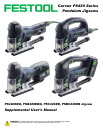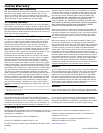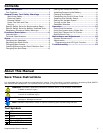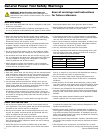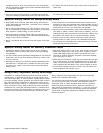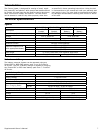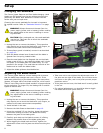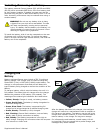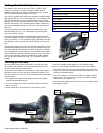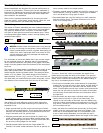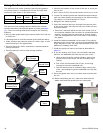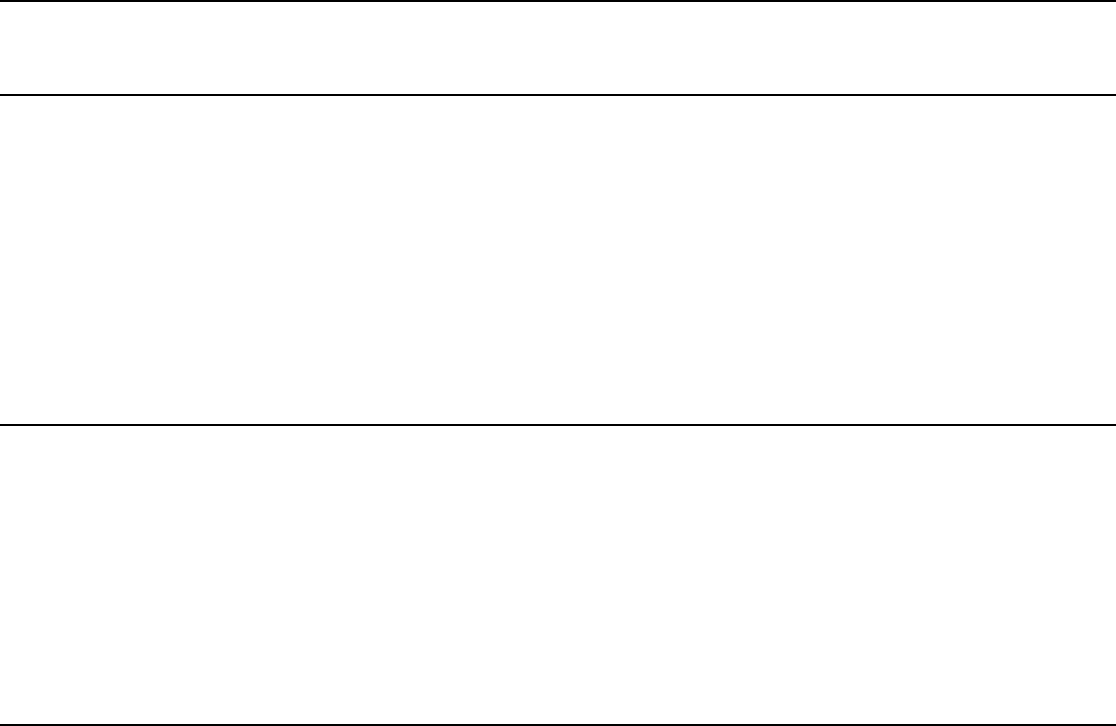
Supplemental Owner’s Manual 5
conditions and the work to be performed. Use of the power
tool for operations different from those intended could result
in a hazardous situation.
► To reduce the risk of serious injury, never alter or misuse the
power tool.
Service
► Have your power tool serviced by a qualied repair person
using only identical replacement parts. This will ensure that
the safety of the power tool is maintained.
Specic Safety Rules for Reciprocating Saws
► Keep hands away from the blade and cutting area. Do not
reach underneath the workpiece. The blade is fully exposed
under the workpiece.
► Never hold the piece being cut in your hands or across your
leg. It is important to support the work properly to minimize
body exposure, blade binding, or loss of control.
► Check that there is enough space under the workpiece for
the reciprocating saw blade. If the saw blade strikes another
object, it may cause a kickback.
► Never cut material that is thicker than the length of the saw
blade.
► Hold the saw by the insulated handles when performing an
operation in which the sawblade may contact hidden wiring or
its own cord. Contact with a “live” wire will make the exposed
metal parts of the tool “live” and shock the operator.
► Never use a dust extraction system when making cuts that
can result in sparks (unless a spark trap is installed), such as
cutting through nails and other ferrous materials. Sparks and
hot embers can cause a re in the dust extraction system.
► Always check the saw blade to make sure it does not have
missing teeth or is bent. Do not use a damaged saw blade.
► Do not touch the saw blade after prolonged cutting. The saw
blade may be hot and cause burns.
Specic Safety Rules for Battery Powered Tools
► Remove the battery before adjusting the tool or changing
saw blades. Failure to do so may result in the tool starting
unexpectedly.
► Use only battery packs specically designated for use with the
power tool. Use of any other battery packs may create a risk
of injury and re.
► Recharge the battery only with the charger specied by the
manufacturer. A charger that is suitable for one type of bat-
tery pack may create a risk of re when used with another
battery pack.
► When the battery pack is not in use, keep it away from metal
objects like paper clips, coins, keys, nails, screws, or other
small metal objects that can make a connection from one
terminal to another. Shorting the battery terminals together
may cause burns or a re.
► Under abusive conditions, liquid may be ejected from the bat-
tery; avoid contact. If contact accidentally occurs, ush with
water. If liquid contacts eyes, additionally seek medical help.
Liquid ejected from the battery may cause irritation or burns.
► Do not place batteries near re or heat. This will reduce the
risk of explosion and possibly injury.
Respiratory Exposure Safety Warnings
Substantial or repeated inhalation of dust and other airborne
contaminants, in particular those with a smaller particle size,
may cause respiratory or other illnesses. Various dusts created
by power sanding, sawing, grinding, drilling and other construc-
tion activities contain chemicals or substances known (to the
State of California and others) to cause cancer, birth defects or
other reproductive harm. Some examples of these chemicals/
substances are: lead from lead-based paints; crystalline silica
from bricks, cement, and other masonry products; arsenic and
chromium from chemically-treated lumber; and some wood
dusts, especially from hardwoods, but also from some soft-
woods such as Western Red Cedar.
The risk from these exposures varies, depending on how often
you do this type of work. To reduce your exposure to these
chemicals: work in a well ventilated area and use a properly
functioning dust extraction system. When the inhalation of
dust cannot be substantially controlled, i.e., kept at or near the
ambient (background) level, the operator and any bystanders
should wear a respirator approved by NIOSH for the type of
dust encountered.



